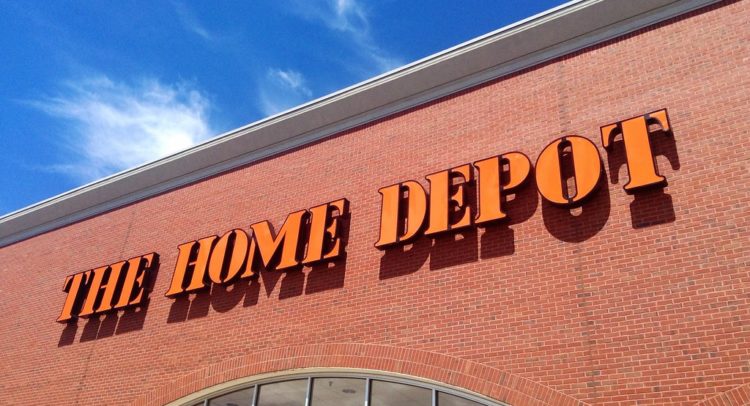The Home Depot (NYSE: HD) operates as a home improvement retailer. Its stock has been on a tear since the start of the pandemic, with shares rallying from $140 in March 2020 to over $400 now.
That said, it seems that the upside may be limited going forward, at least based on consensus estimates. Thus, we remain neutral on Home Depot.
Measuring Efficiency
Home Depot needs to hold onto a lot of inventory in order to keep the business running. Therefore, the speed at which a company can move inventory and convert it into cash is very important in predicting success.
To measure its efficiency, we will use the cash conversion cycle, which shows how many days it takes to convert inventory into cash. It is calculated as follows:
CCC = Days Inventory Outstanding + Days Sales Outstanding – Days Payables Outstanding
Home Depot’s cash conversion cycle is 27 days, meaning it takes the company 27 days for it to convert its inventory into cash. In the past several years, this number has trended downwards, indicating that the company’s efficiency has improved.
In addition to the cash conversion cycle, let’s also take a look at Home Depot’s gross margin trends. Ideally, we would like to see a company’s margins expand each year. This is, of course, unless gross margins are already very high, in which case it is acceptable for them to remain flat.
In Home Depot’s case, gross margins have remained flat in the past several years. Although this is not ideal, it’s important to remember that the retail industry generally does not have very high gross margins.
Thus, being able to maintain stable gross margins has allowed the company to increase its free cash flow margins over the past few years through operating efficiencies.
Risks
To measure Home Depot’s risk, we will first check to see if financial leverage is an issue. We do this by comparing its debt-to-free cash flow. Currently, this number stands at 3x. In addition, when looking at historical trends, we can see that the debt-to-free cash flow ratio has been volatile.

Overall, we don’t believe that debt is currently a material risk for the company because its interest coverage ratio is 9x (calculated as free cash flow divided by interest expenses).
However, there are other risks associated with Home Depot. According to Tipranks’ Risk Analysis tool, the company disclosed 25 risks in its most recent earnings report. The highest amount of risk came from the Production category.
The total number of risks has increased over time, as shown in the picture below.

Wall Street’s Take
Turning to Wall Street, Home Depot has a Moderate Buy consensus rating, based on 16 Buys and six Holds assigned in the past three months. The average Home Depot price target of $424.38 implies 3.5% upside potential.

Final Thoughts
Home Depot is a dominant company in its space that continues to improve its operating efficiencies.
Nonetheless, it seems that the upside potential has mostly been realized already. As a result, we believe there may be better opportunities elsewhere.
Download the TipRanks mobile app now
Disclosure: At the time of publication, StockBros Research did not have a position in any of the securities mentioned in this article.
Disclaimer: The information contained in this article represents the views and opinion of the writer only, and not the views or opinion of TipRanks or its affiliates Read full disclaimer >









